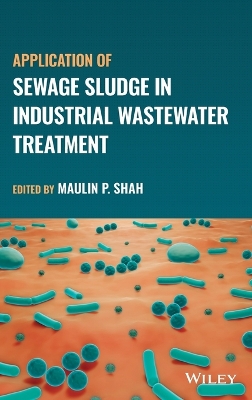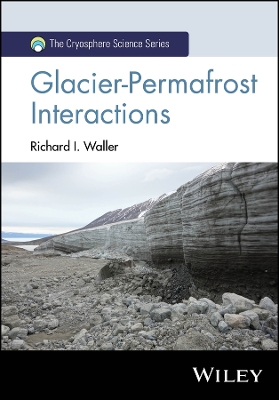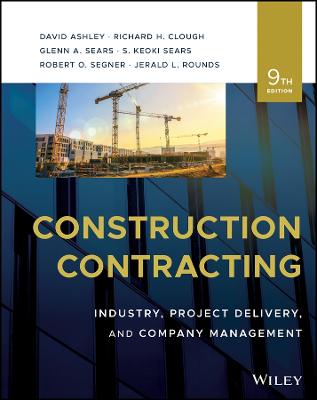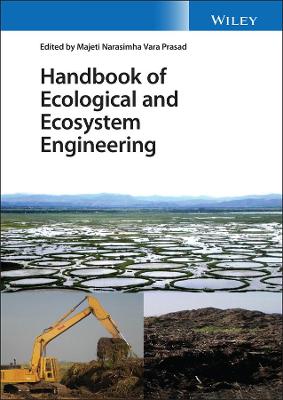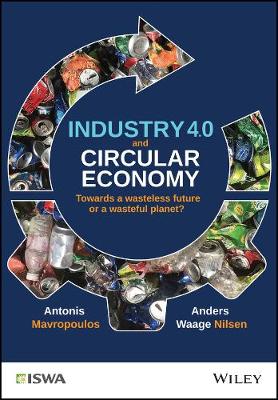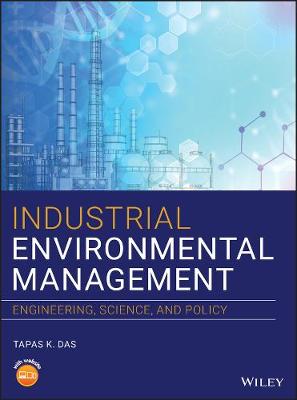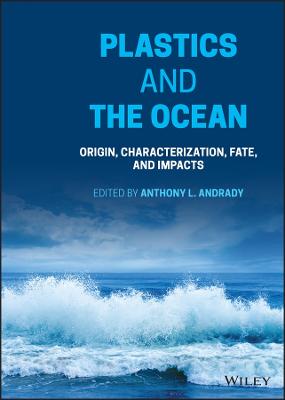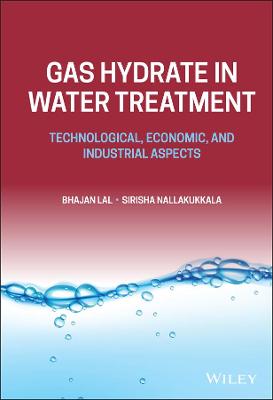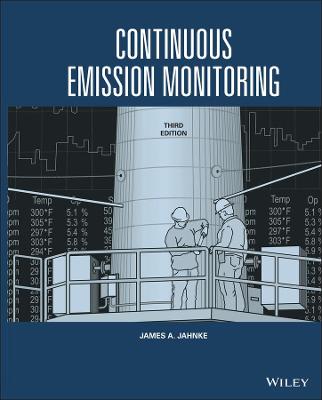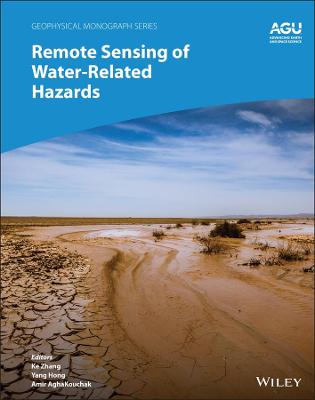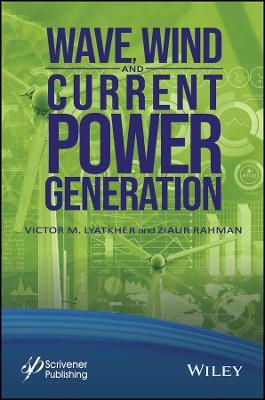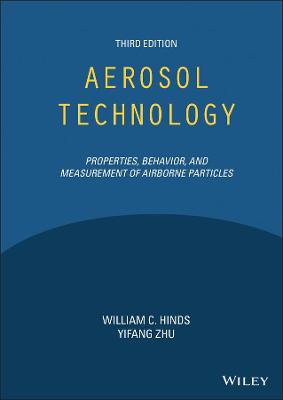Ecorestoration for Sustainability
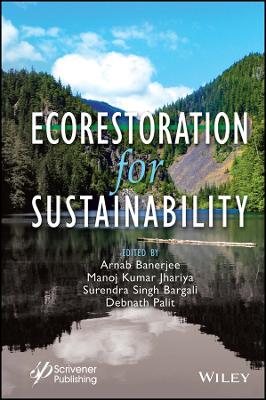 -15%
portes grátis
-15%
portes grátis
Ecorestoration for Sustainability
Banerjee, Arnab; Jhariya, Manoj Kumar; Palit, Debnath; Bargali, Surendra Singh
John Wiley & Sons Inc
08/2023
480
Dura
Inglês
9781119879718
15 a 20 dias
666
Preface xix
1 Ecorestoration for Environmental Sustainability-An Introductory Framework 1
Arnab Banerjee, Manoj Kumar Jhariya, Surendra Singh Bargali and Debnath Palit
1.1 Introduction 2
1.2 Global Scenario of Ecosystem Types and Their Degradation 4
1.2.1 Agroecosystem 5
1.2.2 Forests 6
1.2.3 Freshwater 7
1.2.4 Grasslands, Shrub Lands, and Savannahs 7
1.2.5 Mountains 8
1.2.6 Oceans and Coasts 8
1.2.7 Peat Lands Around 9
1.2.8 Urban Areas 10
1.3 Need of Ecorestoration 10
1.3.1 The Economy 11
1.3.2 Food Security 12
1.3.3 Clean Water 12
1.3.4 Health and Well-Being 13
1.3.5 Climate Change Mitigation 13
1.3.6 Climate Change Adaptation 14
1.3.7 Security 14
1.3.8 Biodiversity 15
1.3.9 Synergies and Trade-Offs 16
1.4 Ecological Restoration and Forestry 16
1.4.1 Forested Wetland Restoration 16
1.5 Ecological Restoration and Societal Development 17
1.5.1 Ecological Restoration in Social Context 17
1.6 Policies and Strategy Formulation for Ecological Restoration Toward Environmental Sustainability 17
1.6.1 Novel Ecosystems and Adapting to Rapid Global Change 18
1.6.2 Climate-Smart Agriculture and Enhancing Socioecological Resilience 19
1.6.3 Increasing the Multifunctionality and Productivity of Agricultural Landscapes 20
1.6.4 Green Infrastructure and Nature-Based Solutions 20
1.6.5 Ecorestoration of Agroecosystem 21
1.6.6 Urbanization and Development 22
1.6.7 Biodiversity Offset Mitigation Through Ecological Restoration 23
1.6.8 Ecological Restoration as an Integral Component of Production Landscapes 24
1.7 Evidence of Success and Benefits of Ecological Restoration 25
1.8 Conclusion 26
References 27
2 Agricultural Soil Management and Ecorestoration Under Climate Change: Practices for Sustainable Soil Resource 49
Zied Haj-Amor, Tesfay Araya, Tapos Kumar Acharjee, Salem Bouri and Ruediger Anlauf
2.1 Introduction 50
2.2 Impacts of Climate Change on Agricultural Soil 51
2.2.1 Soil Erosion 51
2.2.2 Soil Salinization 52
2.2.3 Drought 53
2.3 Potential for Soil and Ecorestoration to Mitigate Climate Change 54
2.3.1 Soil Carbon Sequestration 54
2.3.2 Soil Management Practices for Increasing Carbon Storage in Soil 55
2.3.3 Ecorestoration of Agricultural Soil 57
2.3.4 Potential for Ecorestoration of Soil to Mitigate and Adapt Climate Change 58
2.4 Soil Water Management Under Climate Change/Variability 59
2.4.1 Experiences from Europe 59
2.4.1.1 Improvement of Irrigation to Save Water 59
2.4.1.2 Shifts in Land Use to Adapt to Climate Change 61
2.4.2 Experiences from Bangladesh 61
2.4.3 Experiences from Tunisia 66
2.5 Recommendations for Sustainable Soil Management and Environmental Sustainability 66
2.6 Policy Framework for Ecorestoration and Management of Agricultural Soil 67
2.7 Future Roadmap for Ecorestoration Toward Sustainable Soil Resource 68
2.8 Conclusion 69
Funding 70
References 70
3 Integrated River Health Assessment System (IRHAS): A Promising Tool for Ecorestoration of Tropical Indian Rivers 77
Parul Gurjar, Kuldeep Lakhera, Vipin Vyas and Rumeet Kour Raina
3.1 Introduction 78
3.1.1 River Ecology-An Introductory Remark 78
3.1.2 Status/Scenario of Tropical Rivers in India 78
3.1.3 Concept of Ecorestoration of Riverine Ecosystem in India 79
3.1.4 Role of Biodiversity in Riverine Conservation 80
3.2 Integrated River Health Assessment System (IRHAS)-A Promising Tool 80
3.2.1 Physical Analysis 81
3.2.1.1 Physical Habitat 81
3.2.1.2 Riparian Zone 83
3.2.1.3 Biological Analysis 89
3.2.1.4 Chemical Analysis 93
3.3 Legal and Policy Framework for Effective Implementation of Integrated River Health Assessment System 96
3.4 Future Roadmap of Integrated River Health Assessment System 97
3.5 Concluding Remarks for the Implementation of IRHAS in Indian River Systems to Achieve Environmental Sustainability 98
References 98
4 Wetland Restoration Policies and the Sustainability of Agricultural Productions, Lessons Learnt from Zrebar Lake, Iran 113
Shervin Jamshidi and Anahita Naderi
4.1 Introduction 114
4.1.1 What is Eutrophication? 114
4.1.2 Clarity Reduction 114
4.1.3 Clogging Filters 115
4.1.4 Increasing Health Risks 115
4.1.5 Increasing Ecological Risks 116
4.1.6 pH Variation 117
4.1.7 Human Ecosystem 117
4.2 What is the Cause? 118
4.3 Integrated Sustainable Management 120
4.3.1 Trends and Approaches 120
4.3.2 Best Management Practices (BMPs) 123
4.3.3 Accounting Sustainability by Water Footprint 125
4.4 Zrebar Lake 128
4.4.1 Basin Characteristics 128
4.4.2 Basin Ecology 132
4.4.3 Pollution Sources 141
4.4.4 Water Quality 144
4.4.5 Lessons Learnt 149
4.4.5.1 Zrebar Lake in Studies 149
4.4.5.2 BMPs Impact 151
4.4.5.3 Future Trends and Directives 155
4.4.5.4 Legal and Policy Framework 158
4.5 Conclusion 159
References 160
5 Strategies for Ecosystem Biomass Conservation: Review, Analysis, and Evaluation 167
Silvina M. Manrique
5.1 Introduction 168
5.1.1 Sustainable Development: Bases and Principles 168
5.1.2 Planetary Limits and Natural Capital 169
5.2 Loss of Biospheric Integrity 171
5.2.1 Ecosystems, Biodiversity, and Climate 171
5.2.2 The Global State of Natural Capital 172
5.2.3 Loss of Biomass Integrity of Ecosystems 175
5.3 Strategies for the Conservation/Restoration of Ecosystem Biomass 176
5.3.1 Ecorestoration 177
5.3.2 Payment for Environmental Services (PES) 178
5.3.3 Nature-Based Solutions 178
5.3.4 Ecosystem-Based Adaptation 178
5.3.5 Protected Areas (PAs) 178
5.4 Case Study: Native Forests, Biomass, and Ecosystem Services 180
5.4.1 Lower Yungas Forest (LYF) Context 180
5.4.2 Characterization and Analysis 181
5.4.3 Physiognomy, Floristic Composition, and Richness 184
5.4.4 Stock and Distribution of Carbon in Ecosystem Reservoirs 188
5.4.5 Protected Areas Value and Management Strategies 191
5.5 Effectiveness of Conservation Measures 193
5.5.1 Protected Areas: Are They Meeting Their Goal? 193
5.5.2 Effectiveness of Protected Areas 194
5.6 Conclusions 195
5.7 Policy and Legal Framework for Ecosystem Biomass Conservation 196
5.8 Forest Ecosystem Biomass Conservation Toward Environmental Sustainability 198
5.8.1 Forest Biomass: A Complex and Multidiverse Source of Benefits 198
5.9 Future Roadmap of Forest Biomass Conservation 199
5.10 Final Thoughts 201
References 202
6 Reclamation of Mined Soil in RCF Region-A Phytoremediation Approach 211
Debalina Kar and Debnath Palit
6.1 Introduction 212
6.2 Impact of Mining 212
6.3 Bioremediation and Phytoremediation 213
6.4 Material and Methods 214
6.4.1 Study Sites 214
6.4.2 Ecological Survey or Phytosociological Study for Identifying Pioneering Species of Trees 214
6.5 Results and Discussion 215
6.6 Conclusion 240
References 240
7 Ecological Restoration of Various Ecosystems: Implications for Biodiversity Conservation and Natural Resource Management 245
C.B. Ethis-Eriakha and S.E. Akemu
7.1 Introduction 246
7.2 Ecosystem as a Natural Support System for Biodiversity 247
7.3 Pollution of the Natural Ecosystem 248
7.4 Deforestation 249
7.5 Consequences of Pollution of the Natural Ecosystem 250
7.6 Ecorestoration for Conservation of Biodiversity and Natural Resources 253
7.7 Various Approaches to Ecological Restoration-Natural Regeneration and Active Ecorestoration 255
7.8 Tools for Ecological Restoration of Various Ecosystems 256
7.9 Ecorestoration of Biodiversity in Terrestrial, Aquatic Ecosystems, Wetlands, Tropical Forests, Grasslands 257
7.10 Research and Development Activities in Ecorestoration for Conservation of Biodiversity and Natural Resources 258
7.11 Policy and Legal Framework for Ecorestoration, Conservation of Biodiversity and Natural Resources 259
7.12 Future Roadmap 260
7.13 Conclusion 261
References 261
8 Managing Forests for Offsetting Carbon Footprints 267
Abhishek Raj, Manoj Kumar Jhariya, Arnab Banerjee, Bharat Lal, Taher Mechergui, Annpurna Devi and Ghanshyam
8.1 Introduction 268
8.2 Global Forests Scenario 269
8.3 Carbon Footprint: A Conceptual Framework 272
8.4 Carbon Footprint Calculator 276
8.5 Technology for Forest Cover and Carbon Assessment 277
8.6 Measuring Carbon Emissions from Deforestation 280
8.7 Carbon Sinks in Forests 282
8.8 Forest Management for Carbon Mitigation 283
8.9 Emerging Challenges and Constraint 284
8.10 Research and Development Toward Footprints 285
8.11 Policy and Legal Framework 285
References 286
9 Ecosystem Management of Polluted Forest and Its Implication on Biodiversity Conservation in the Niger Delta 295
Aroloye O. Numbere and Eberechukwu M. Maduike
9.1 Introduction 296
9.2 Profiles of Mangrove Biodiversity in the Niger Delta 298
9.2.1 Vegetation 298
9.2.2 Wildlife 299
9.2.3 Impact of Hydrocarbon Pollution on Mangrove Flora and Fauna 300
9.2.4 Impact of Pesticide (Herbicide) Application on Mangrove Vegetation 302
9.3 Environmental Management and Restoration Ecology as Solutions 303
9.4 The Human Factor and the Practice of a Win-Win Ecology in Biodiversity Conservation 304
9.5 Regional Versus Local Site Management 308
9.6 Policy and Legal Framework and Eco-Restoration of Polluted Sites and Biodiversity Conservation of Niger Delta 309
9.7 Future Research and Development of Conservation of Mangrove Ecosystem in the Niger Delta 310
9.8 Conclusion 311
References 312
10 Forest Biodiversity Conservation and Restoration: Policies, Plan, and Approaches 317
Abhishek Raj, Manoj Kumar Jhariya, Arnab Banerjee, Bhimappa Honnappa Kittur, Surendra Singh Bargali, Kiran Bargali and Sharad Nema
10.1 Introduction 318
10.1.1 Forest Resources and Biodiversity 320
10.1.2 Faunal Diversity in Tropical Forest 321
10.1.3 Forest Degradation and Fragmentation 325
10.2 Need for Forest Restoration Program 326
10.3 Value of Restoring Forests 329
10.4 Forest Landscape Restoration Vis-A-Vis Conservation Strategies 329
10.5 Forest Landscape Restoration for Ecological Integrity 330
10.6 Restoration of Degraded Tropical Forest 331
10.7 Ecosystem Approaches to Forest Restoration: Learning from the Past 332
10.8 Forest Restoration for Enhancing Biodiversity and Ecosystem Services 332
10.9 Forest Landscape Restoration: Indian Perspective 334
10.10 Forest Landscape Restoration for C Footprint and Climate Change Mitigation 336
10.11 Forest Landscape Restoration for Livelihood and Well-Being 338
10.12 Constraints and Challenges 338
10.13 Existing Policy and Its Reformation 339
10.14 Advances in Restoration: Plan and Execution 340
10.15 Recommendation and Future Research 340
10.16 Conclusion 341
References 341
11 Geospatial Techniques in Sustainable Forest Management for Ecorestoration and Different Environmental Protection Issues 351
Shiboram Banerjee and Debnath Palit
11.1 Introduction 352
11.2 The Assessment of Forest Resources and Its Sustainable Use 355
11.3 Aerial Mode of Remote Sensing 356
11.4 Satellite Mode of Remote Sensing 357
11.5 Assessment of Wildlife Habitat 359
11.6 Assessment of Biodiversity Networks 359
11.7 Productivity and Biomass Assessment in Terrestrial Regime 360
11.8 Land Cover and Land Use Analysis 360
11.9 Characterization of Wetland at Landscape Level 361
11.10 Assessment of Grassland Habitat 362
11.11 Evaluation of Carbon Sequestration 362
11.12 Detection of Air Pollution Intensities 363
11.13 Ecorestoration for Sustainable Development 364
11.14 Conclusions 366
Acknowledgments 366
References 367
12 Climate-Induced Conflicts Between Rural Farmers and Cattle Herders: Implications on Sustainable Agriculture and Food Security in Nigeria 373
Angela Oyilieze Akanwa, Arnab Banerjee , Manoj Kumar Jhariya, L.N. Muoghalu, A.U. Okonkwo, F.I. Ikegbunam, I.C. Ezeomedo, S.O. Okeke, P.U. Igwe, V.C. Arah, C.C. Anukwonke, M.C. Obidiegwu and E.I. Madukasi
12.1 Introduction 374
12.2 Agroecological Zones and Climate Change in Nigeria-Drought Crisis in Sahel 377
12.3 Ethnic Conflicts, Origin, and Intensification of Violence and Impacts 383
12.3.1 Pre-Colonial Era 383
12.3.2 Colonial and Post-Colonial Periods 385
12.3.3 Impacts of Conflict: Human Costs 392
12.3.4 Loss of Revenue 395
12.3.5 Growing Food Insecurity in Nigeria 395
12.4 Environmental Injustice and Herder/Farmer Conflict in Nigeria 398
12.5 Confronting the Challenges of Farmer/Herder Conflict in Nigeria 399
12.5.1 Intensified Agricultural Activities in Nigeria 399
12.5.2 Community Participation 402
12.5.3 Intervention of Science and Technology 403
12.5.4 Policy and Legal Perspective 405
12.6 Conclusion 406
References 407
13 Sustainable Management of Natural Resources for Environmental Sustainability 417
Asmida Ismail, Faezah Pardi, Khairul Adzfa Radzun, Siti Khairiyah Mohd Hatta, Mohd Nazip Suratman, Nurul Aida Kamal Ikhsan and Faeiza Buyong
13.1 Introduction 418
13.2 The Insight on Management and Sustainable Use of Natural Resources 419
13.3 Unequal Distribution of Natural Resources 420
13.4 Success Stories of Natural Resource Sustainable Management 421
13.4.1 Germany 421
13.4.2 China 422
13.4.3 Malaysia 423
13.5 Policy and Legal Framework for Sustainable Management of Natural Resources: A Review on United Nation (UN) 50 Years of Sustainable Development Policy 425
13.6 Future Outlook of Sustainable Management of Natural Resources 430
13.6.1 The Future of Sustainable Management 431
13.6.1.1 Political Commitment 431
13.6.1.2 Sustainable Development Policy 431
13.6.1.3 Mathematical Model 432
13.6.1.4 Advanced Technology 432
13.6.2 Comprehensive Approach 433
References 433
About the Editors 439
Index 441
Preface xix
1 Ecorestoration for Environmental Sustainability-An Introductory Framework 1
Arnab Banerjee, Manoj Kumar Jhariya, Surendra Singh Bargali and Debnath Palit
1.1 Introduction 2
1.2 Global Scenario of Ecosystem Types and Their Degradation 4
1.2.1 Agroecosystem 5
1.2.2 Forests 6
1.2.3 Freshwater 7
1.2.4 Grasslands, Shrub Lands, and Savannahs 7
1.2.5 Mountains 8
1.2.6 Oceans and Coasts 8
1.2.7 Peat Lands Around 9
1.2.8 Urban Areas 10
1.3 Need of Ecorestoration 10
1.3.1 The Economy 11
1.3.2 Food Security 12
1.3.3 Clean Water 12
1.3.4 Health and Well-Being 13
1.3.5 Climate Change Mitigation 13
1.3.6 Climate Change Adaptation 14
1.3.7 Security 14
1.3.8 Biodiversity 15
1.3.9 Synergies and Trade-Offs 16
1.4 Ecological Restoration and Forestry 16
1.4.1 Forested Wetland Restoration 16
1.5 Ecological Restoration and Societal Development 17
1.5.1 Ecological Restoration in Social Context 17
1.6 Policies and Strategy Formulation for Ecological Restoration Toward Environmental Sustainability 17
1.6.1 Novel Ecosystems and Adapting to Rapid Global Change 18
1.6.2 Climate-Smart Agriculture and Enhancing Socioecological Resilience 19
1.6.3 Increasing the Multifunctionality and Productivity of Agricultural Landscapes 20
1.6.4 Green Infrastructure and Nature-Based Solutions 20
1.6.5 Ecorestoration of Agroecosystem 21
1.6.6 Urbanization and Development 22
1.6.7 Biodiversity Offset Mitigation Through Ecological Restoration 23
1.6.8 Ecological Restoration as an Integral Component of Production Landscapes 24
1.7 Evidence of Success and Benefits of Ecological Restoration 25
1.8 Conclusion 26
References 27
2 Agricultural Soil Management and Ecorestoration Under Climate Change: Practices for Sustainable Soil Resource 49
Zied Haj-Amor, Tesfay Araya, Tapos Kumar Acharjee, Salem Bouri and Ruediger Anlauf
2.1 Introduction 50
2.2 Impacts of Climate Change on Agricultural Soil 51
2.2.1 Soil Erosion 51
2.2.2 Soil Salinization 52
2.2.3 Drought 53
2.3 Potential for Soil and Ecorestoration to Mitigate Climate Change 54
2.3.1 Soil Carbon Sequestration 54
2.3.2 Soil Management Practices for Increasing Carbon Storage in Soil 55
2.3.3 Ecorestoration of Agricultural Soil 57
2.3.4 Potential for Ecorestoration of Soil to Mitigate and Adapt Climate Change 58
2.4 Soil Water Management Under Climate Change/Variability 59
2.4.1 Experiences from Europe 59
2.4.1.1 Improvement of Irrigation to Save Water 59
2.4.1.2 Shifts in Land Use to Adapt to Climate Change 61
2.4.2 Experiences from Bangladesh 61
2.4.3 Experiences from Tunisia 66
2.5 Recommendations for Sustainable Soil Management and Environmental Sustainability 66
2.6 Policy Framework for Ecorestoration and Management of Agricultural Soil 67
2.7 Future Roadmap for Ecorestoration Toward Sustainable Soil Resource 68
2.8 Conclusion 69
Funding 70
References 70
3 Integrated River Health Assessment System (IRHAS): A Promising Tool for Ecorestoration of Tropical Indian Rivers 77
Parul Gurjar, Kuldeep Lakhera, Vipin Vyas and Rumeet Kour Raina
3.1 Introduction 78
3.1.1 River Ecology-An Introductory Remark 78
3.1.2 Status/Scenario of Tropical Rivers in India 78
3.1.3 Concept of Ecorestoration of Riverine Ecosystem in India 79
3.1.4 Role of Biodiversity in Riverine Conservation 80
3.2 Integrated River Health Assessment System (IRHAS)-A Promising Tool 80
3.2.1 Physical Analysis 81
3.2.1.1 Physical Habitat 81
3.2.1.2 Riparian Zone 83
3.2.1.3 Biological Analysis 89
3.2.1.4 Chemical Analysis 93
3.3 Legal and Policy Framework for Effective Implementation of Integrated River Health Assessment System 96
3.4 Future Roadmap of Integrated River Health Assessment System 97
3.5 Concluding Remarks for the Implementation of IRHAS in Indian River Systems to Achieve Environmental Sustainability 98
References 98
4 Wetland Restoration Policies and the Sustainability of Agricultural Productions, Lessons Learnt from Zrebar Lake, Iran 113
Shervin Jamshidi and Anahita Naderi
4.1 Introduction 114
4.1.1 What is Eutrophication? 114
4.1.2 Clarity Reduction 114
4.1.3 Clogging Filters 115
4.1.4 Increasing Health Risks 115
4.1.5 Increasing Ecological Risks 116
4.1.6 pH Variation 117
4.1.7 Human Ecosystem 117
4.2 What is the Cause? 118
4.3 Integrated Sustainable Management 120
4.3.1 Trends and Approaches 120
4.3.2 Best Management Practices (BMPs) 123
4.3.3 Accounting Sustainability by Water Footprint 125
4.4 Zrebar Lake 128
4.4.1 Basin Characteristics 128
4.4.2 Basin Ecology 132
4.4.3 Pollution Sources 141
4.4.4 Water Quality 144
4.4.5 Lessons Learnt 149
4.4.5.1 Zrebar Lake in Studies 149
4.4.5.2 BMPs Impact 151
4.4.5.3 Future Trends and Directives 155
4.4.5.4 Legal and Policy Framework 158
4.5 Conclusion 159
References 160
5 Strategies for Ecosystem Biomass Conservation: Review, Analysis, and Evaluation 167
Silvina M. Manrique
5.1 Introduction 168
5.1.1 Sustainable Development: Bases and Principles 168
5.1.2 Planetary Limits and Natural Capital 169
5.2 Loss of Biospheric Integrity 171
5.2.1 Ecosystems, Biodiversity, and Climate 171
5.2.2 The Global State of Natural Capital 172
5.2.3 Loss of Biomass Integrity of Ecosystems 175
5.3 Strategies for the Conservation/Restoration of Ecosystem Biomass 176
5.3.1 Ecorestoration 177
5.3.2 Payment for Environmental Services (PES) 178
5.3.3 Nature-Based Solutions 178
5.3.4 Ecosystem-Based Adaptation 178
5.3.5 Protected Areas (PAs) 178
5.4 Case Study: Native Forests, Biomass, and Ecosystem Services 180
5.4.1 Lower Yungas Forest (LYF) Context 180
5.4.2 Characterization and Analysis 181
5.4.3 Physiognomy, Floristic Composition, and Richness 184
5.4.4 Stock and Distribution of Carbon in Ecosystem Reservoirs 188
5.4.5 Protected Areas Value and Management Strategies 191
5.5 Effectiveness of Conservation Measures 193
5.5.1 Protected Areas: Are They Meeting Their Goal? 193
5.5.2 Effectiveness of Protected Areas 194
5.6 Conclusions 195
5.7 Policy and Legal Framework for Ecosystem Biomass Conservation 196
5.8 Forest Ecosystem Biomass Conservation Toward Environmental Sustainability 198
5.8.1 Forest Biomass: A Complex and Multidiverse Source of Benefits 198
5.9 Future Roadmap of Forest Biomass Conservation 199
5.10 Final Thoughts 201
References 202
6 Reclamation of Mined Soil in RCF Region-A Phytoremediation Approach 211
Debalina Kar and Debnath Palit
6.1 Introduction 212
6.2 Impact of Mining 212
6.3 Bioremediation and Phytoremediation 213
6.4 Material and Methods 214
6.4.1 Study Sites 214
6.4.2 Ecological Survey or Phytosociological Study for Identifying Pioneering Species of Trees 214
6.5 Results and Discussion 215
6.6 Conclusion 240
References 240
7 Ecological Restoration of Various Ecosystems: Implications for Biodiversity Conservation and Natural Resource Management 245
C.B. Ethis-Eriakha and S.E. Akemu
7.1 Introduction 246
7.2 Ecosystem as a Natural Support System for Biodiversity 247
7.3 Pollution of the Natural Ecosystem 248
7.4 Deforestation 249
7.5 Consequences of Pollution of the Natural Ecosystem 250
7.6 Ecorestoration for Conservation of Biodiversity and Natural Resources 253
7.7 Various Approaches to Ecological Restoration-Natural Regeneration and Active Ecorestoration 255
7.8 Tools for Ecological Restoration of Various Ecosystems 256
7.9 Ecorestoration of Biodiversity in Terrestrial, Aquatic Ecosystems, Wetlands, Tropical Forests, Grasslands 257
7.10 Research and Development Activities in Ecorestoration for Conservation of Biodiversity and Natural Resources 258
7.11 Policy and Legal Framework for Ecorestoration, Conservation of Biodiversity and Natural Resources 259
7.12 Future Roadmap 260
7.13 Conclusion 261
References 261
8 Managing Forests for Offsetting Carbon Footprints 267
Abhishek Raj, Manoj Kumar Jhariya, Arnab Banerjee, Bharat Lal, Taher Mechergui, Annpurna Devi and Ghanshyam
8.1 Introduction 268
8.2 Global Forests Scenario 269
8.3 Carbon Footprint: A Conceptual Framework 272
8.4 Carbon Footprint Calculator 276
8.5 Technology for Forest Cover and Carbon Assessment 277
8.6 Measuring Carbon Emissions from Deforestation 280
8.7 Carbon Sinks in Forests 282
8.8 Forest Management for Carbon Mitigation 283
8.9 Emerging Challenges and Constraint 284
8.10 Research and Development Toward Footprints 285
8.11 Policy and Legal Framework 285
References 286
9 Ecosystem Management of Polluted Forest and Its Implication on Biodiversity Conservation in the Niger Delta 295
Aroloye O. Numbere and Eberechukwu M. Maduike
9.1 Introduction 296
9.2 Profiles of Mangrove Biodiversity in the Niger Delta 298
9.2.1 Vegetation 298
9.2.2 Wildlife 299
9.2.3 Impact of Hydrocarbon Pollution on Mangrove Flora and Fauna 300
9.2.4 Impact of Pesticide (Herbicide) Application on Mangrove Vegetation 302
9.3 Environmental Management and Restoration Ecology as Solutions 303
9.4 The Human Factor and the Practice of a Win-Win Ecology in Biodiversity Conservation 304
9.5 Regional Versus Local Site Management 308
9.6 Policy and Legal Framework and Eco-Restoration of Polluted Sites and Biodiversity Conservation of Niger Delta 309
9.7 Future Research and Development of Conservation of Mangrove Ecosystem in the Niger Delta 310
9.8 Conclusion 311
References 312
10 Forest Biodiversity Conservation and Restoration: Policies, Plan, and Approaches 317
Abhishek Raj, Manoj Kumar Jhariya, Arnab Banerjee, Bhimappa Honnappa Kittur, Surendra Singh Bargali, Kiran Bargali and Sharad Nema
10.1 Introduction 318
10.1.1 Forest Resources and Biodiversity 320
10.1.2 Faunal Diversity in Tropical Forest 321
10.1.3 Forest Degradation and Fragmentation 325
10.2 Need for Forest Restoration Program 326
10.3 Value of Restoring Forests 329
10.4 Forest Landscape Restoration Vis-A-Vis Conservation Strategies 329
10.5 Forest Landscape Restoration for Ecological Integrity 330
10.6 Restoration of Degraded Tropical Forest 331
10.7 Ecosystem Approaches to Forest Restoration: Learning from the Past 332
10.8 Forest Restoration for Enhancing Biodiversity and Ecosystem Services 332
10.9 Forest Landscape Restoration: Indian Perspective 334
10.10 Forest Landscape Restoration for C Footprint and Climate Change Mitigation 336
10.11 Forest Landscape Restoration for Livelihood and Well-Being 338
10.12 Constraints and Challenges 338
10.13 Existing Policy and Its Reformation 339
10.14 Advances in Restoration: Plan and Execution 340
10.15 Recommendation and Future Research 340
10.16 Conclusion 341
References 341
11 Geospatial Techniques in Sustainable Forest Management for Ecorestoration and Different Environmental Protection Issues 351
Shiboram Banerjee and Debnath Palit
11.1 Introduction 352
11.2 The Assessment of Forest Resources and Its Sustainable Use 355
11.3 Aerial Mode of Remote Sensing 356
11.4 Satellite Mode of Remote Sensing 357
11.5 Assessment of Wildlife Habitat 359
11.6 Assessment of Biodiversity Networks 359
11.7 Productivity and Biomass Assessment in Terrestrial Regime 360
11.8 Land Cover and Land Use Analysis 360
11.9 Characterization of Wetland at Landscape Level 361
11.10 Assessment of Grassland Habitat 362
11.11 Evaluation of Carbon Sequestration 362
11.12 Detection of Air Pollution Intensities 363
11.13 Ecorestoration for Sustainable Development 364
11.14 Conclusions 366
Acknowledgments 366
References 367
12 Climate-Induced Conflicts Between Rural Farmers and Cattle Herders: Implications on Sustainable Agriculture and Food Security in Nigeria 373
Angela Oyilieze Akanwa, Arnab Banerjee , Manoj Kumar Jhariya, L.N. Muoghalu, A.U. Okonkwo, F.I. Ikegbunam, I.C. Ezeomedo, S.O. Okeke, P.U. Igwe, V.C. Arah, C.C. Anukwonke, M.C. Obidiegwu and E.I. Madukasi
12.1 Introduction 374
12.2 Agroecological Zones and Climate Change in Nigeria-Drought Crisis in Sahel 377
12.3 Ethnic Conflicts, Origin, and Intensification of Violence and Impacts 383
12.3.1 Pre-Colonial Era 383
12.3.2 Colonial and Post-Colonial Periods 385
12.3.3 Impacts of Conflict: Human Costs 392
12.3.4 Loss of Revenue 395
12.3.5 Growing Food Insecurity in Nigeria 395
12.4 Environmental Injustice and Herder/Farmer Conflict in Nigeria 398
12.5 Confronting the Challenges of Farmer/Herder Conflict in Nigeria 399
12.5.1 Intensified Agricultural Activities in Nigeria 399
12.5.2 Community Participation 402
12.5.3 Intervention of Science and Technology 403
12.5.4 Policy and Legal Perspective 405
12.6 Conclusion 406
References 407
13 Sustainable Management of Natural Resources for Environmental Sustainability 417
Asmida Ismail, Faezah Pardi, Khairul Adzfa Radzun, Siti Khairiyah Mohd Hatta, Mohd Nazip Suratman, Nurul Aida Kamal Ikhsan and Faeiza Buyong
13.1 Introduction 418
13.2 The Insight on Management and Sustainable Use of Natural Resources 419
13.3 Unequal Distribution of Natural Resources 420
13.4 Success Stories of Natural Resource Sustainable Management 421
13.4.1 Germany 421
13.4.2 China 422
13.4.3 Malaysia 423
13.5 Policy and Legal Framework for Sustainable Management of Natural Resources: A Review on United Nation (UN) 50 Years of Sustainable Development Policy 425
13.6 Future Outlook of Sustainable Management of Natural Resources 430
13.6.1 The Future of Sustainable Management 431
13.6.1.1 Political Commitment 431
13.6.1.2 Sustainable Development Policy 431
13.6.1.3 Mathematical Model 432
13.6.1.4 Advanced Technology 432
13.6.2 Comprehensive Approach 433
References 433
About the Editors 439
Index 441


